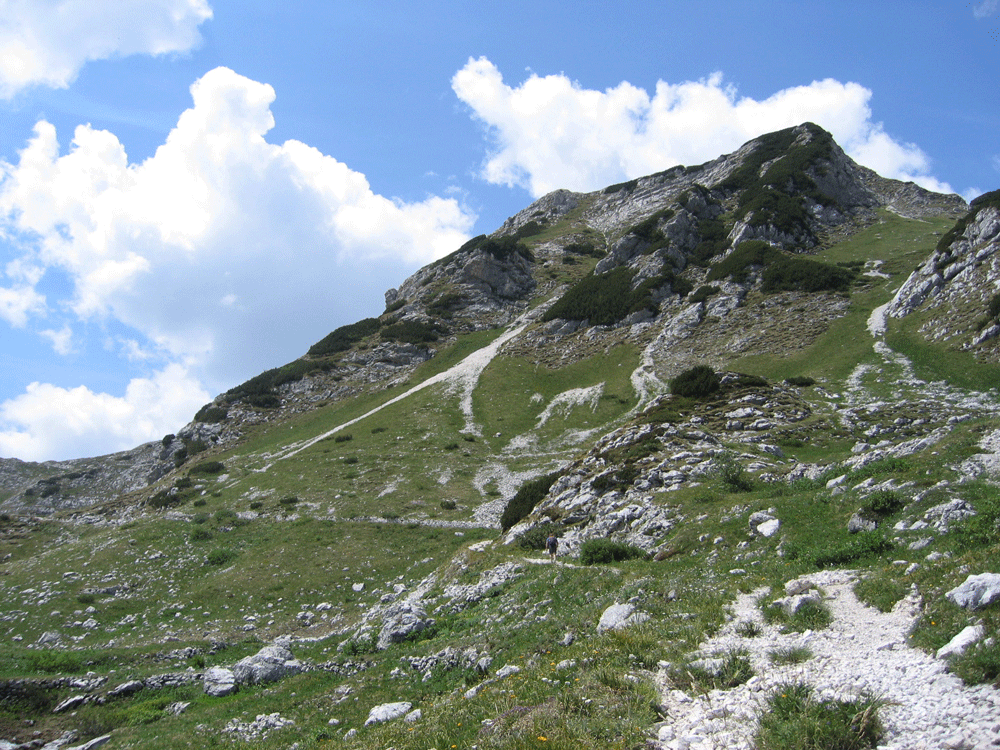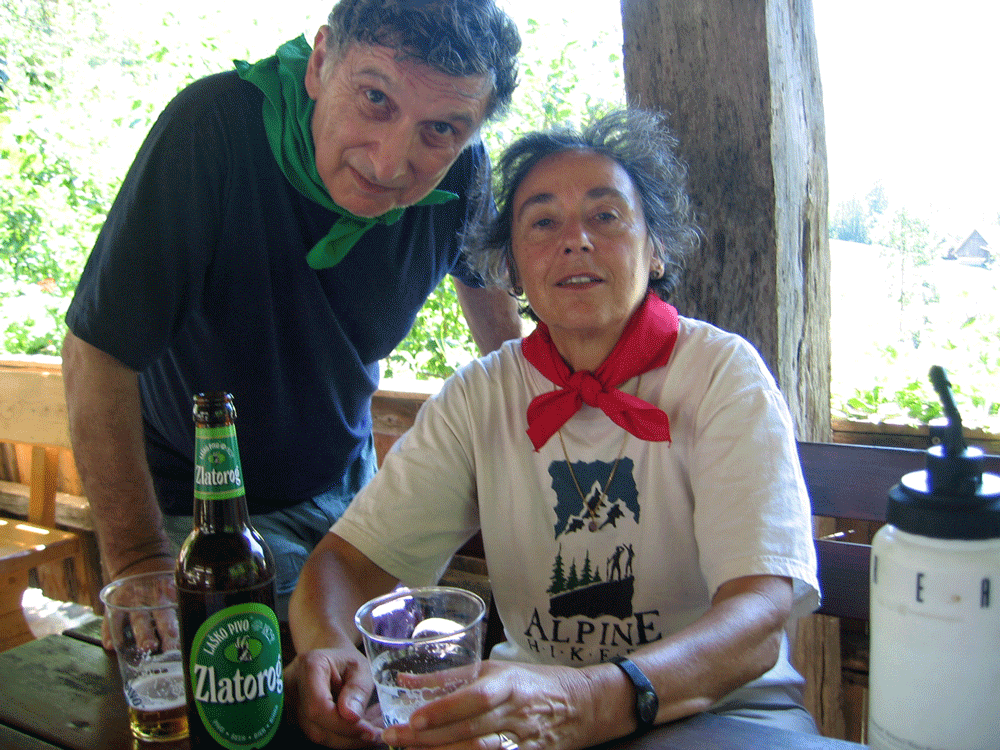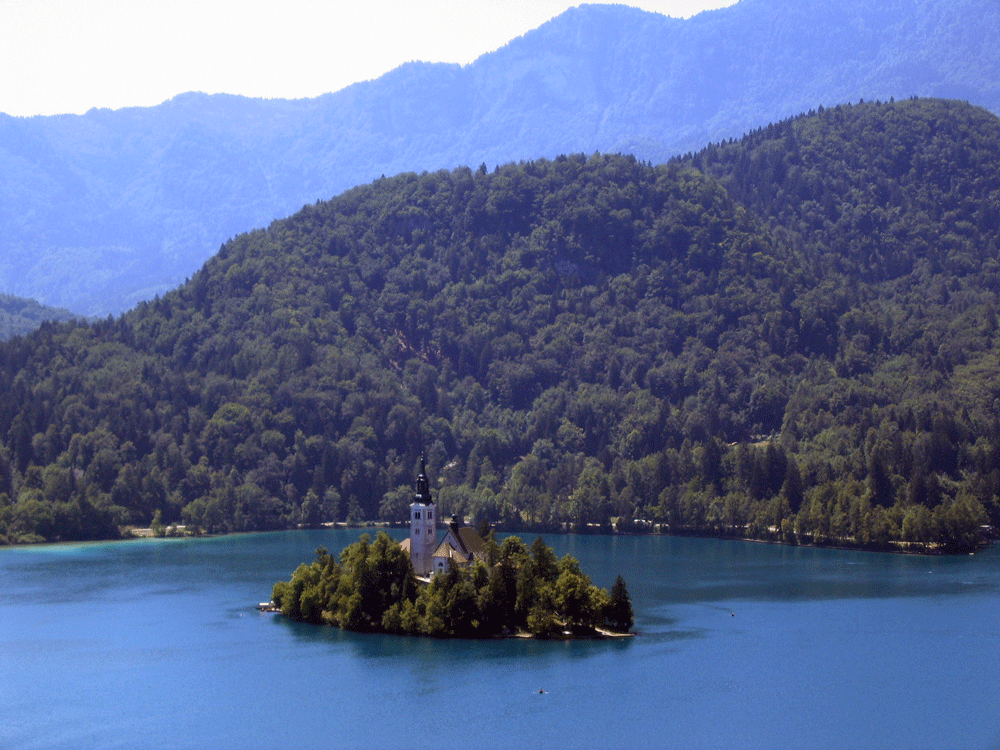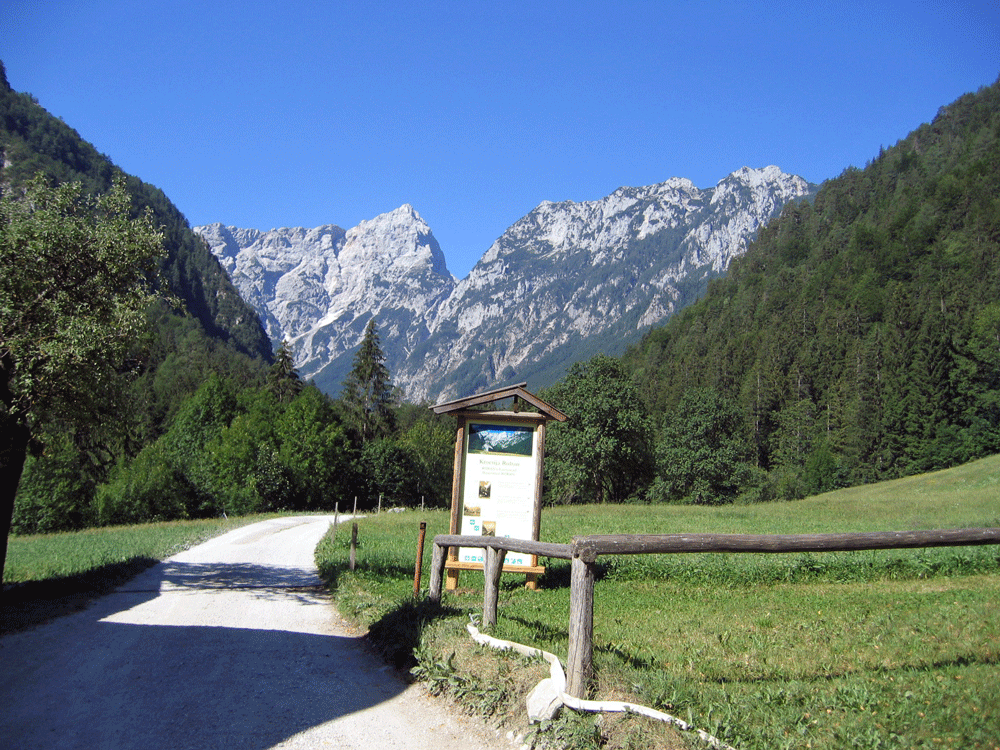July 2006

Slovenia is not an imaginary country. Nor is it Slavonia (that’s in Croatia) or Slovakia (once attached to the Czech Republic). Rather it is the northwest corner of what was once Yugoslavia. A very small corner indeed, with fewer than three million residents. It is heavily forested and mountainous, which is why we went there.
Although there are a few direct flights to the capital, Ljublijana, we had to change in Paris. DeGaulle airport remains a mess--no place to sit, and air craft parked miles from the gates. Our onward plane to Ljublijana had to be refueled while we were on the ground. We were instructed to unbuckle our seat belts during the process, which seemed ominous.
Ljublijana is (obviously) a small place and thus ideal for walking. Much of the center has been nicely “pedestrianized.” The center of the old town is on a river with a small but famous triple bridge. Lots of folks outdoors eating (ice cream included), and drinking, especially drinking. We recommend our hotel: the Grand Union Executive. Not nearly as pretentious as it sounds. Very quiet and spacious rooms. Wonderful rooftop swimming pool.
We took in the usual museums: modern art, historical, etymological. All worthwhile and uncrowded. The Castle, under restoration, was far busier, but provided great views and a “virtual tour” (electronic) of the city. The steep ascent was good preparation for our imminent hiking trip. The food, more Italian than Eastern European, was splendid. English is widely spoken. We learned only the essential terms: dober dan (good day); slap (waterfall); and pivo (beer).
After two days it was time to join a Sierra Club trip. This was our second such, but very different from last summer’s in Alaska. A much smaller group, and no camping (the hotels were all very good). Trip leader Marjorie was assisted by her friend Angela. Also by two comely young guides: Nena (Slovenian) and Ivona (Czech). And by our Czech van driver, Slavek, who serenaded us with his accordion when we left for hikes. His real name, Jaroslav, could not be used because one of the guides knew a Jaroslav whom she disliked. A promising sign was that we were taken to a place that had freshly made ice cream with hot blueberry sauce.
Everything in Slovenia is close by. In only a few hours we were at the Hotel Plesnik, which stands in a very green field, with glorious views of the Savinja Alps. (Although not on our agenda, good rock climbing and mountaineering abound in the country. A number of major Himalayan climbers are Slovenian.) We found the hiking moderate--never very steep, but a lot of up hill. The common crushed-gravel trail surface was uncomfortable. But there were many rewards--not only the forests and mountain views, but also the huts. They supplied food and drink, including the local beers, Laszko and Union. This is an amenity sadly lacking here.
Our four fellow client hikers had various limitations: one was great going up but terrified of descent; another was bad at both, though fine on level ground; a third was breaking in new boots, while the other was even older than I. The trip had happily been planned with a number of options, so that participants could avoid the longer or steeper trails. On the first day, only Susan and I, with Nena and Ivona, chose an afternoon ascent past an enormous waterfall. An hour later we reached a hut with beer and tourists from Spokane. “We take easier way down,” Nena announced. It might have been easier had it not been swept away by an avalanche of last winter’s heavy snow. As it was, we had to scramble up a mangled slope and across scree to regain what remained of the trail. We had a similar problem the next morning: the route vanished in a tangle of downed trees. We retreated to a hut for mushroom soup (a national favorite) and blueberry liqueur.
After three days, Slavek drove us on to Lake Bled, the country’s major tourist spot. The lake is small and blue, mountainous and lovely. I rode a stretch gondola to tiny Bled Island. It has two distinctions:
1) It consists almost entirely of a church (of the Assumption);
2) It is the only island in the entire country.
We drove on to another (islandless) lake, Bohinj. We stayed at the Hotel Jezero, near the waterfront of a small resort town. Hikes from here were relatively gentle, and ended with a swim in the lake. We were now in Triglav National Park, home of the Julian Alps. The highest point is Triglav, 9,394 feet. It is said that every Slovenian must climb it at least once, but we weren’t Slovenian and didn’t have to. Our most ambitious venture was a moderate but long hike to a Swiss-style hut high in the mountains. En route we saw abandoned stone houses, as well as works remaining from the fierce fighting in WWI. We were in the Kobarid region, known to all of you as Caporetto, scene of the chaotic Italian retreat in A Farewell to Arms. The hut itself was very comfortable; we had a private room with a bathroom (flush toilet) down the hall.
The next day was my birthday, and therefore a national holiday. We celebrated with a bottle of exceptionally bad Slovenian champagne and general jollity. But on my actual birthday, only Angela and I opted for the highest hike, up Mt. Krn (actual spelling--for more info see the oddly translated web site : http://krn.damjanleban.com/index_ang.html). After a minimal breakfast, we started at 6:00 that morning. For once, the hike felt truly alpine. The trail passed several small snow patches and climbed well over the tree line. On top we met a 65-year-old Slovenian professor of statistics; he was happy that someone even older than he had made the climb. After a drink at the inevitable hut ten minutes below the summit, we hastened down the far side. A long descent--4000 feet, but gravity was on our side. A few hours brought us to a parking area where Slavek and his van collected us. We stayed at the hotel Hisa Franko, a lovely rural place comparable to the best we have known anywhere, with food comparable to what you find in the best NYC restaurants.
That was the end of our Slovenian hiking, but rafting remained: several hours on the pellucid Soca River. You could see the pebbly bottom many feet down. The water was not only clear but cold, as a brief swim showed. We came very close to several involuntary dips as well. Although touted as fairly easy, with water low the rapids were scary. We bounced off rocks and were thrown into (but not quite out of) the raft. After this we were happy to have a quiet day: morning walk up a gorge , followed by an afternoon excursion, with hundreds of others, in the Skocjan Caves (a UNESCO heritage site). Not your ordinary caverns. Vaults a hundred feet high, weird shapes, stalagmites (one of them 250,000 years old) and stalactites. The place was huge, some of the catwalks a bit scary.
Now the Sierra Club trip was (successfully) finished, and everyone went home. Except us. We took an 8-hour train to Budapest. At the border, immigration officers boarded to check our passports--a rare event these days in much of Europe. We found Budapest big and hot; also friendkly and manageable, although they speak a difficult language and use different money. As usual, we tried out the subway, which was quite efficient but limited in the areas that it served. We visited the central synagogue and Jewish museum, reminders of the city’s violent past. The sense of the past is immediate at the Holocaust Museum--new and quite impressive--and at a number of memorials to those killed, such as a “torture museum” about the Communist takeover. We went to one outdoor concert (Mozart, Bach...), ate at some wonderful restaurants and one great one (Baraka). Stayed at the Taverna Hotel, recommended by a friend. Very convenient, quiet; we never had a chance to use its bowling alley. Took a boat up the Danube to a picturesque village with hilltop castle. Susan enjoyed the baths, especially as she could wear her glasses and avoid embarrassing moments.
All was calm during our city stay, but the subsequent disturbances (October) suggest the potential for turbulence. Life is rarely smooth in these parts.


Addendum: